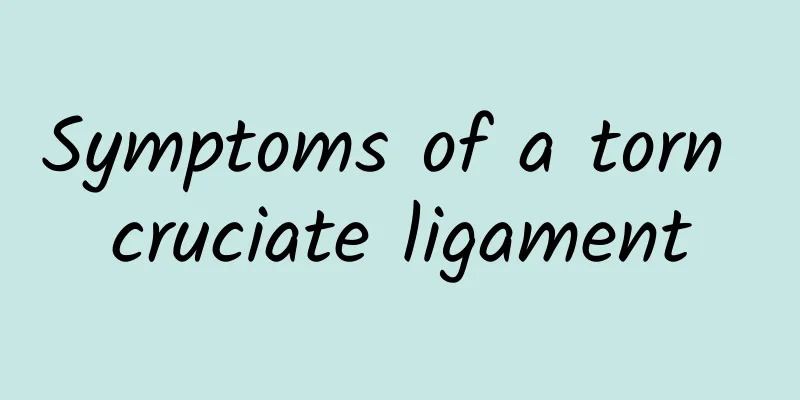Complications of myocardial infarction

|
Myocardial infarction is a very dangerous heart disease that can be life-threatening at any time. Generally, myocardial infarction often occurs in the elderly. As long as the elderly feel heart failure or abnormal heartbeat, especially those with high blood pressure, they should be more careful about myocardial infarction. Myocardial infarction is often accompanied by some complications, all of which are related to the human heart, so do not take them lightly. Complications of myocardial infarction: 1. Heart rupture It often occurs within 1 to 2 weeks after myocardial infarction, and is more common in the lower 1/3 of the anterior wall of the left ventricle. The reason is that the infarct focus loses its elasticity, myocardial necrosis, and enzymatic dissolution caused by the release of hydrolases by neutrophils and monocytes leads to rupture of the heart wall, and the blood in the ventricles enters the pericardium, causing pericardial tamponade and sudden death. 2. Ventricular aneurysm It can occur in the early stage of myocardial infarction or in the healing stage when the infarct focus has become fibrotic. The infarcted myocardium or scar tissue bulges outward in a limited manner under the action of intraventricular pressure, forming a ventricular aneurysm. Ventricular aneurysm may be followed by mural thrombus, arrhythmia and heart failure. 3. Mural thrombosis More common in the left ventricle. Thrombosis is induced due to the roughness of the intimal membrane in the infarct area and the occurrence of vortexes in the ventricular aneurysm. Thrombi may become organized, and a few thrombi may break off due to cardiac contraction and cause embolism in the arterial system. 4. Arrhythmia It often occurs in the early stage of the disease, but may also occur within 1 to 2 weeks of onset. Ventricular premature beats are the most common, and ventricular tachycardia and ventricular fibrillation may occur, leading to cardiac arrest and sudden death. Slow arrhythmias such as bradycardia and atrioventricular block are common in patients with inferior wall infarction in the early stages of the disease. Most of them can be recovered, but a few require permanent pacemaker treatment. 5. Heart failure and cardiogenic shock It can be seen in the early stage of the disease or several days after onset. Please see the clinical manifestations section for details. 6. Post-myocardial infarction syndrome It usually occurs within 2 to 3 weeks or several months after acute myocardial infarction, manifesting as pericarditis, pleurisy, or pneumonia, with symptoms such as fever and chest pain. It may occur repeatedly and may be an allergic reaction of the body to its own antigens formed by myocardial necrosis. Myocardial infarction is myocardial necrosis caused by acute and persistent ischemia and hypoxia of the coronary arteries. This disease is most common in Europe and the United States, with approximately 1.5 million people suffering from myocardial infarction each year in the United States. China has shown a clear upward trend in recent years, with at least 500,000 new cases each year and at least 2 million current patients. |
<<: Causes of Myocardial Infarction
>>: Nursing measures for myocardial infarction
Recommend
What causes excessive vaginal discharge and bloating in the stomach?
Everyone knows that female leucorrhea is a barome...
How to eat Huangjing
Polygonatum odoratum is a common Chinese herbal m...
How to preserve good traditional Chinese medicine
Nowadays, many people who hope to improve their p...
What is the reason why women's fingers swell up after waking up?
There are many reasons for swollen fingers after ...
Will blood heat affect pregnancy?
A person's blood also has temperature, and th...
How to judge whether a baby has cerebral palsy? You can observe from these postures
Cerebral palsy is a common disease in infants and...
How to fill tooth decay
There are many causes of tooth decay. The most co...
How many days in hospital for appendectomy surgery
Acute appendicitis requires immediate surgical tr...
Stomach pain after eating
Sometimes, some people have stomach pain after ea...
What causes abnormal discharge of brain neurons?
In life, winter is generally the peak season for ...
How to reduce scars
Scars will affect our appearance and image, but i...
What causes eyelid swelling and pain
Eyes are an important visual organ of the human b...
Can rhubarb foot bath cure varicose veins?
Rhubarb is a very common medicinal material in da...
What to eat when you have a toothache
Toothache is not a disease, but the pain is reall...
Is it okay for children to sleep with the elderly?
For parents, if they are busy with work, they oft...









